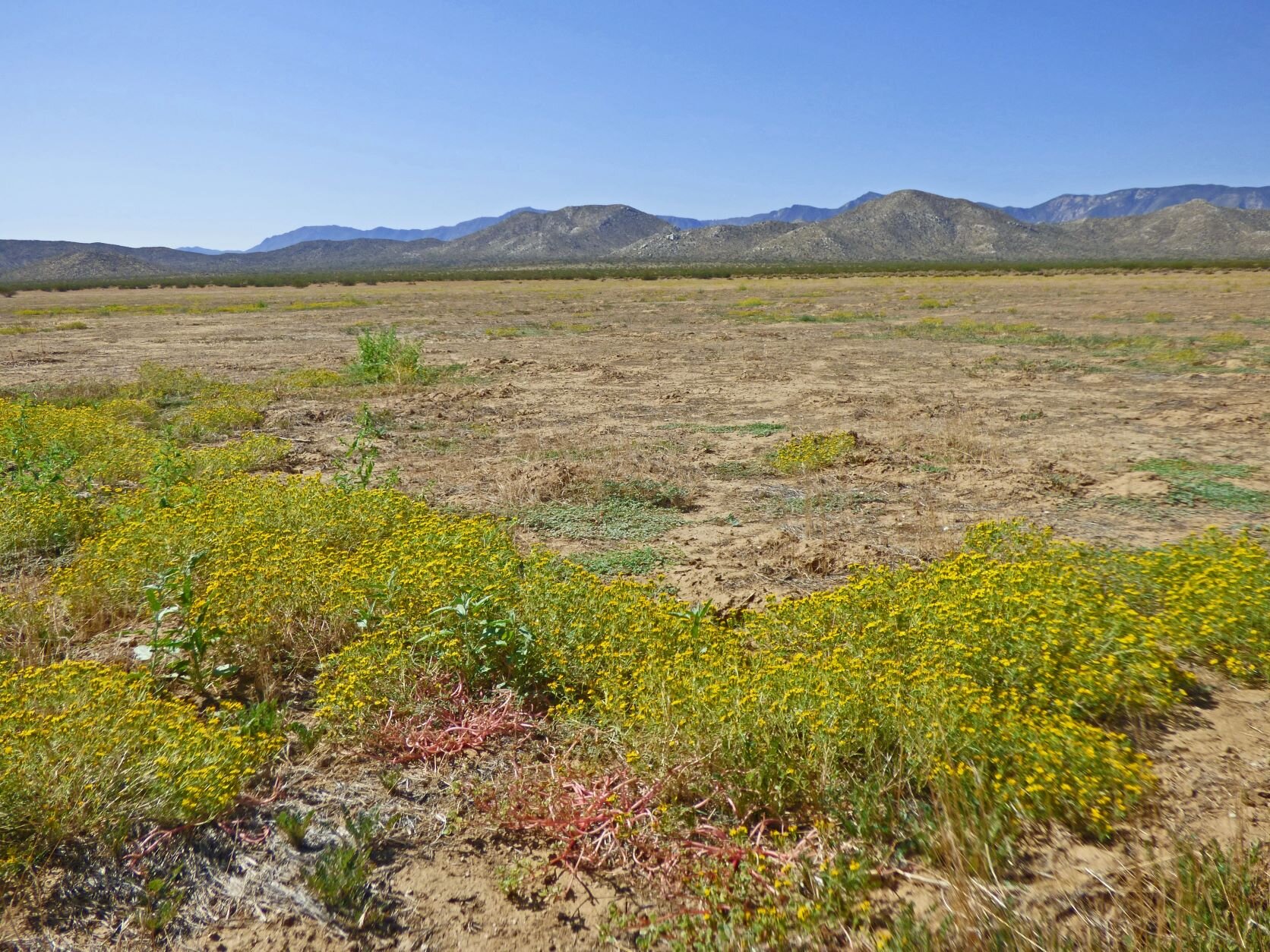By Lee Gordon, CNPS-San Diego Garden Committee member
My house in Scripps Ranch backs up to a steep hill with a slope about as steep as it gets. Soon after I arrived 35 years ago, the homeowners association above ours proposed cutting down all the native shrubs on the hill above our property and replacing them with ice plant. I wrote a letter to them explaining that the roots of the native shrubs on the hill hold the soil together to help maintain slope stability and that killing the shrubs and replacing them with ice plant would weaken the hillside and possibly lead to catastrophic landslides—with my house right in the path! The association understood and dropped the subject. Around that time, my association cleared a brush management zone at the base of the hill. They routinely weed-whipped this zone every year for the next 25 years. Shrubs grew 6 inches in the rainy season, only to be whipped down to the ground every summer, producing an unpleasant and unattractive grassland of non-native Ripgut Brome (Bromus diandrus).
I got tired of looking at this eyesore hillside, so about a decade ago, I killed the grass with a post-emergent herbicide (Clethodim) and stopped the yearly weed-whipping. Shrubs that had hung in through 25 years of mistreatment, with long- established roots, now grew quickly. Since large areas remained open, I started planting native shrubs in the gaps. To find native plants I liked, I walked around natural open spaces in the surrounding neighborhoods. I also began to irrigate the area monthly, each time depositing around 1 inch of water. This work of planting and irrigating has transformed the hillside in 10 “short” years.
Our local native shrubs provide superior slope stabilization because of their tough, extensive, and deep roots, most of which are within a foot or so of the soil surface and reach out far beyond the shrubs’ drip lines. Attesting to this is a 27-foot tall scrub oak with a 10-inch-diameter trunk growing higher up the hill about 75 feet from a well-watered grass lawn, which has enabled it to grow far larger than scrub oaks elsewhere on the hill. Extensive horizontal webs of native roots hold the critical top layer of soil together to maintain the hill’s stability.
I trim the shrubs on the hillside into tree form by pruning the limbs closest to the ground. This not only makes the plants look better, but also makes it easier to maintain the ground under the shrubs, improving fire safety. Pruning branches at the bottom also spurs the plants to add growth at the top. I have been surprised at how quickly these shrubs have grown. In the next 10 years, I expect many to become 20- to 30-foot tall trees.
This Scrub Oak (Quercus berberidifolia) was 3 feet tall in 2009 and is now 19 feet tall and 27 feet wide, a growth rate of 1.3 feet/year. Most of the scrub oaks on this hill grow more slowly, but they still grow become small trees in a decade.







